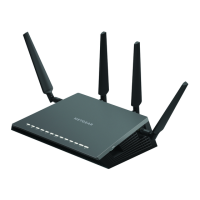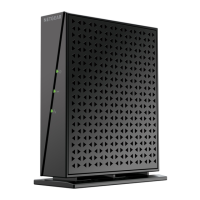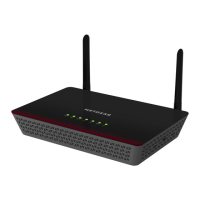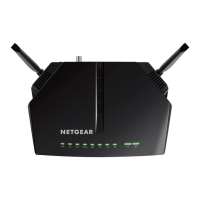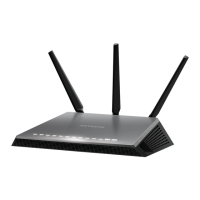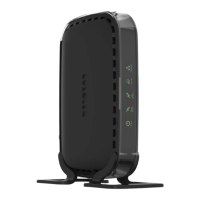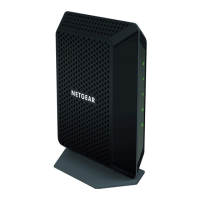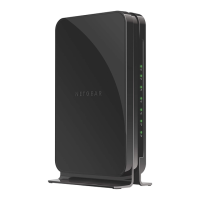Enable Bridge Mode for IPTV Devices
Some devices, such as an IPTV, cannot function behind the modem router’s network address translation (NAT)
service or firewall. Based on what your Internet service provider (ISP) requires, for the device to connect to the ISP’s
network directly, you can enable the bridge between the device and the modem router’s virtual IPTV interface. In
bridge mode, by default, the LAN 4 port on the back panel of the modem router is bound to the virtual IPTV interface.
In addition to connecting an IPTV device to the LAN 4 port, you can connect an IPTV device to the LAN 3 port and
another one to the LAN 2 port. That is, the modem router can support up to three IPTV devices. The LAN 1 port is
reserved for a wired Internet connection. Do not connect an IPTV device to the LAN 1 port.
For information about enabling and configuring the virtual IPTV interface, see one of the following sections:
• Manually Set Up an ADSL Internet Connection on page 49
• Manually Set Up a VDSL Internet Connection on page 60
• Manually Set Up a Cable or Fiber Internet Connection on page 69
To enable bridge mode for one or more IPTV devices:
1. Launch a web browser from a computer or WiFi device that is connected to the network.
2. Enter http://www.routerlogin.net.
A login window opens.
3. Enter the modem router user name and password.
The user name is admin.The default password is password.The user name and password are case-sensitive.
The BASIC Home page displays.
4. Select Internet.
The Internet Setup page displays.
When you set up your Internet connection (either through NETGEAR genie, through the Setup Wizard, or
manually), the country, ISP, transfer mode, and DSL mode were already specified.
Manage the WAN and LAN Network Settings
202
Nighthawk AC1900 WiFi VDSL/ADSL Modem Router Model D7000

